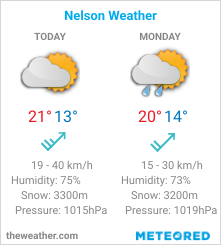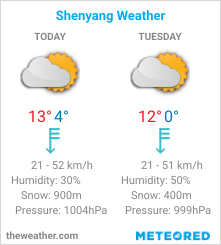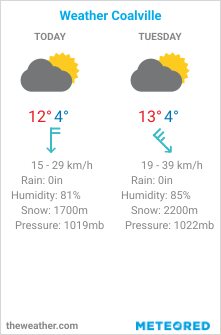Posted on by laststandonzombieisland Leave a comment
Here at LSOZI, we take off every Wednesday for a look at the old steam/diesel navies of the 1833-1954 time period and will profile a different ship each week. These ships have a life, a tale all their own, which sometimes takes them to the strangest places.- Christopher Eger
Warship Wednesday, Feb. 9, 2022: Banana Sub-Buster

U.S. Navy Photo 19-LCM-70554.
Here we see, proudly flying her Tricolor, the Free French Navy’s (FNFL) croiseur auxiliaire/Q-ship Cap des Palmes while off Mare Island, California, 21 July 1944. Seen above in her most powerful final form as a fighting ship, her war was already largely over.
Built by Helsingör Vaerft (Burmeister & Wain) in Denmark, she was designed from the keel up as a partially refrigerated “bananier” fruit carrier, ordered by the French shipping firm, Compagnie Fraissinet.

Compagnie Fraissinet – Navire Bananier Cap des Palmes
The 2,900-ton (4,200 full-load) freighter, some 330-feet in overall length, was capable of sustaining 17 knots for a 10,000-mile voyage– fast enough to get a load of bananas from French Equatorial Africa to Europe in less than a week, without stopping, then head back as soon as she was unloaded. Her specialty was a twice-a-month Libreville to Algiers/Marseilles run.
War!
This speed and range, in 1939, made her ideal for conversion to a fast troop carrier/auxiliary cruiser, and she was taken up from trade that year by the French Navy, requisitioned in Libreville. Her initial conversion amounted to a fast coat of grey paint, the addition of some codebooks and an extra radio, and two elderly 90mm/50 cal Mle1877 De Bang pattern field guns on M1916 carriages. Strapped down fore and aft of the wheelhouse, each gun had but 24 shells. A pair of 13.2mm machine guns were also added.
Used to escort coastwise and South Atlantic convoys until the Fall of France, she was in European waters when the Republic made peace with the Axis in June 1940. She was dispatched by the Vichy government to carry troops from Dakar in Senegal to Libreville in Gabon along with the submarine Ponceletin in September 1940 to beef up security in that colony (and help disperse French naval assets even further out of German reach). Locked into that latter port by an Allied blockade, the armed freighter was boarded by marins from the 800-ton Free French aviso (sloop) Commandant Dominé (A15) in November and was captured without a fight, by what seems to be a mutual agreement.
Joining De Gaulle

Call to action for the FNFL
One of the larger vessels under the 4,500-strong FNFL’s control (besides the disarmed old battleships Paris and Courbet), De Gaul and company sought to have Cap Des Palmes upgraded and up-armed by the British, who didn’t have time and space for such foolishness.
Dispatched to the Pacific, where the French colonies of Polynesia and New Caledonia had declared for De Gaulle and whose officials were concerned about an increasingly aggressive Japan, she cruised through the Caribbean and the Panama Canal in July-August 1941, accompanied by the 900-ton minesweeping sloop (avisos dragueur de mines) Chevreuil (A10).
These two ships, in addition to the cruiser submarine Surcourf, which was lost on the way to the Far East, and the “super destroyer” (which the FNFL referred to as a light cruiser) Le Triomphant, were the only Free French warships in the Pacific at the time. Notably, Le Triomphant would be recalled to the Atlantic by 1943 after spending most of 1942 being essentially rebuilt in Australia, leaving Cap Des Palmes and the little Chevreuil holding the bag.
Cap Des Palmes was the first FNFL ship to reach the New Caledonian port of Noumea, arriving there on 5 November 1941 with a team of De Gaullist officers aboard. It was a big boost for the locals, a sign they hadn’t been forgotten. For example, before the vessel arrived, the port’s main garrison consisted of just 30 French soldiers besides local troops.

November 5, 1941, Cap des Palmes arrived in Noumea
Bigger, stronger, better…
Once in the Pacific, the British had made some sort of half-hearted promise to upgrade Cap Des Palmes at Singapore, but she spent the rest of 1941 shuttling military supplies, troops, and workers between the French Pacific colonies, New Hebrides, and Australia. Meanwhile, once Japan entered the war in December, Singapore soon fell and the little French banana boat never did get her Royal Navy overhaul. The closest she got was a quick refit in Australia, which saw depth charges and more machine guns added.
Recognizing the change in the winds of war, Cap Des Palmes was briefly turned into a prison ship, transporting over 300 Japanese citizens who were found in the French colonies to Australia post-Pearl Harbor.
The vessel was then very active throughout 1942 in a series of yeoman services, used on a regular Nouma to Sydney run supporting Allied interests. In addition, she was used to installing coastwatcher assets throughout the islands– men whose work would become vital with the Japanese push into the Solomons and New Guinea.
In November 1942, she was sent to Mare Island for a refit and conversion to a Q-ship with her profile changed to mimic a Soviet freighter.

The Free-French “cargo ship” Cap des Palmes of the cie. de Nav Fraissinet, Marseilles, at San Francisco, California. About 1942. Note that you can see at least six skyward 20mm AAA guns. She also had several larger guns and six torpedo tubes hidden by false bulkheads and crates. NH 89860
She picked up a new radio set, a pair of 6″/50 (15.2 cm) Mark 6/8s leftover from the 1900s, as well as two 3″/50s, eight Oerlikons, six 21-inch torpedo tubes (in twin 3-tube launchers), and well as four depth charge throwers. She was also fitted with seaplane support facilities, although she never carried one. To her crew were added a U.S. Navy technical team consisting of an officer, four petty officers, and four sailors, who “all spoke French, being of Canadian origin or Acadian.”
She also had been given new accommodations for her 140-man crew, with an account saying, “The interior fittings for the crew have been completely modified, making the facilities very comfortable. The hammocks had been replaced by berths, refectories, and canteens were installed, and the Cap des Palmes was the first ship in the French Navy to be equipped with individual meal trays.”
Her new skipper was Capt. Georges Cabanier, late of the famed Free French submarine Rubis.
As noted by a former tankerman, whose oiler came across the French Q-ship in 1943:
At Suva, we fueled the French cruiser Cap des Palmes, which we were supposed to meet, and she escorted us up the coast. She had nothing but 20-millimeter guns visible. However, her foredeck, which was built up to look like lifeboats and rafts, concealed cleverly disguised 6-inch guns. On closer inspection, we also found that more ‘lifeboats’ on her afterdeck were 6-inch guns.
Operational from April 1943 onward, she worked on the periphery of the U.S. Third Fleet in the South Pacific around Guadalcanal, frequently part of Task Unit 35-1-8, and, on 16 May 1943, she is believed by some to have sunk a Japanese submarine although this was never officially vetted by post-war commissions. The engagement consisted of seven depth charges tossed on a persistent sonar contact, roughly at 17° 34 South and 169° West, about midway between Samoa and Fiji. Certainly not very convincing, but a possible engagement.
The only Japanese submarine reported missing around the time and in the area Cap Des Palmes was active, RO-102, believed lost somewhere Southeast of New Guinea– several hundred miles away. That boat’s end is listed by the scholars over at Combined Fleet as follows:
RO-102 is often listed as lost in action against PT-150 and PT-152 off Lae on 13/14 May 1943. In reality, the PT-boats’ adversary was I-6, who survived the encounter. Some sources confuse her with I-18, sunk by USS Fletcher (DD-445) off San Cristobal on 11 February 1943. The circumstances surrounding the loss of RO-102 remain unknown.
On 2 June 1943, the Imperial Japanese Navy declared Ro-102 to be presumed lost south of Rabi, with all 42 men on board, and struck her name from their Navy List the next month. Her wreck has thus far never been found.
In August, Cap Des Palms again engaged a suspected submarine, at 21° 40 South and 164° 08 East, then worked in conjunction with aircraft to bird-dog (but didn’t get any hits on) what later turned out to be IJN I-17, sunk on 19 August 1943 by HMNZS Tui (T234) and American Kingfisher float-planes of VS-57.
Nonetheless, our banana boat survived her time in some of the hairiest parts of the Pacific in 1943, typically sailing alone, and was sent back to Mare Island in April 1944 for a further update.
She emerged in July with a snazzy new camo scheme, a surface search radar, and yet another different profile.

French ship Cap Des Palmes, broadside, port, while off Mare Island, California, 21 July 1944. 19-LCM-70555.

Bow-on view, same day. 19-LCM-70558

French ship Cap Des Palmes, stern view, while at Mare Island, California, 21 July 1944. 19-LCM-70559.

Get a look at that big 6-incher

A great view of her aft gun tubs

Note her masts and radar
For more information about Cap Des Palmes and the Free French Navy in the Pacific during WWII, check out Peter Igman’s article in Apr. 2009 issue of The Navy.
In May 1945, it was decided to send Cap des Palmes back home for a refit at Brest, in preparation for the big push against Japan. Her cruise home found her stopping at Sydney, Melbourne, Freemantle, Tamatave (Madagascar), Diego Suarez, Aden, Suez, and Port Said, arriving in Saint-Nazaire three weeks after VJ-Day.
From 8 August 1941 to 26 September 1945, Cap des Palmes was underway for 984 days under FNFL’s banner and was recommended for the Ordre de la Division by VADM Lemonnier, Chief of the General Staff of the Navy.
Still under naval orders, she returned to the Pacific and, from 13 February to 15 March 1946, Cap des Palmes sailed from Toulon to Saigon as a troopship, carrying troops to fight in Indochina, then made the return trip to Toulon, arriving there in June.
She was disarmed, stripped of her military equipment, and returned to her owners on 19 July.
Epilogue
The U.S. National Archives has a few documents from the wartime service of Cap Des Palmes, mostly from her stints at Mare Island.
The French Navy, meanwhile, has maintained an enduring series of guard boats, patrol ships, and surveillance frigates in the Pacific, including one stationed in Noumea itself, since WWII.
Sold by Fraissinet to the Compagnie Maritime de Navigation Fruitièr (which still exists), she was renamed Banfora in 1957, later transferring to a Moroccan registry under the same name.

Banora
While shipping a load of oranges from Africa to West Germany, she sprang a leak and sank under tow off Spain’s Cape Villano, 17 November 1965. A total loss, her crew was saved.
She is, however, remembered in a variety of maritime art.

The ex-banana boat Cap Des Palmes, arrives in Nouméa Harbor, On 5 November 1941, the first Free French vessel to arrive in the isolated colony. By Roberto Lunardo

Another by Roberto Lunardo, showing her wartime colors
Specs:
Displacement: 2983 grt (Lloyds) over 4,150 as a cruiser
Length: 330 feet
Beam: 44 feet
Draft: 17 feet
Propulsion: 1 x 9 cyl. B&W 2SCSA diesel engine, 4500shp, 3 Auxiliaries of 450 HP, 1 shaft, 1 screw, cruiser stern
Speed: 18 knots maximum (decreased to 14.5 during the war)
Merchant crew: ~36
Wartime complement (FNFL): 2 officers, 20 petty officers, 120 quartermasters, and sailors.
Armarment:
(1940)
2 x 1 – 90mm field guns
2 x 1 – 13.2mm MGs
(after 1942)
2 x 1 – 152/50 Mark 6/8 (ex USN)
2 x 1 – 3″/50 (ex USN)
8 x 1 – 20/70 Oerlikon (ex USN)
2 x 3 – 533 TT (ex USN)
4 DCT
If you liked this column, please consider joining the International Naval Research Organization (INRO), Publishers of Warship International
They are possibly one of the best sources of naval study, images, and fellowship you can find. http://www.warship.org/membership.htm
The International Naval Research Organization is a non-profit corporation dedicated to the encouragement of the study of naval vessels and their histories, principally in the era of iron and steel warships (about 1860 to date). Its purpose is to provide information and a means of contact for those interested in warships.
With more than 50 years of scholarship, Warship International, the written tome of the INRO has published hundreds of articles, most of which are unique in their sweep and subject.
PRINT still has its place. If you LOVE warships you should belong.
I’m a member, so should you be!
from JC's Naval and Military news and photos https://ift.tt/rcdAzW3
via IFTTT










No comments:
Post a Comment
How did you like the post, leave a comment. I would appreciate hearing from you all. Best wishes from JC's Naval, Maritime and Military News